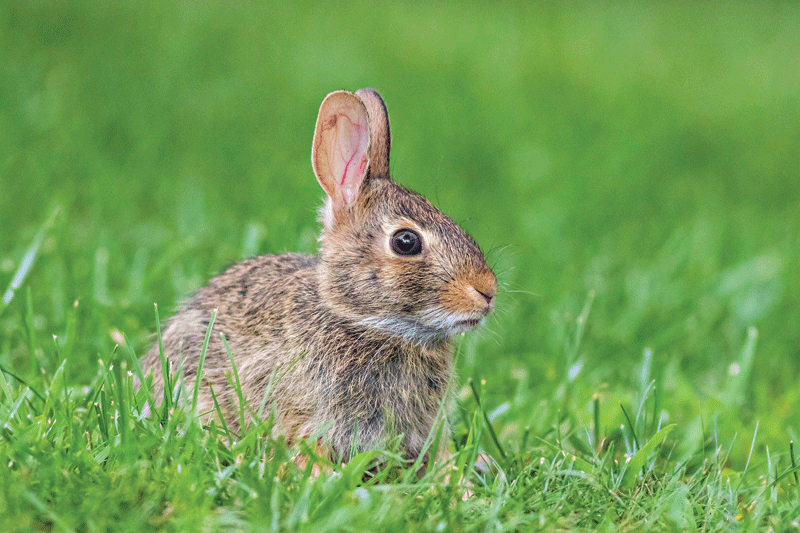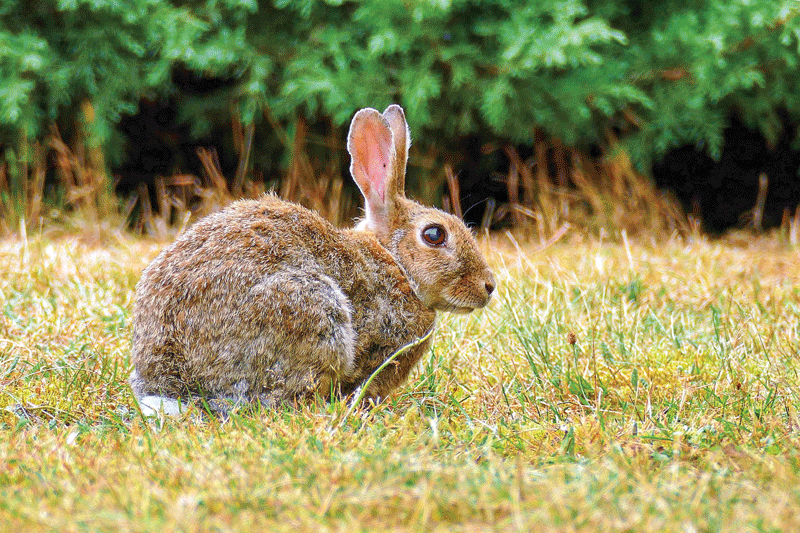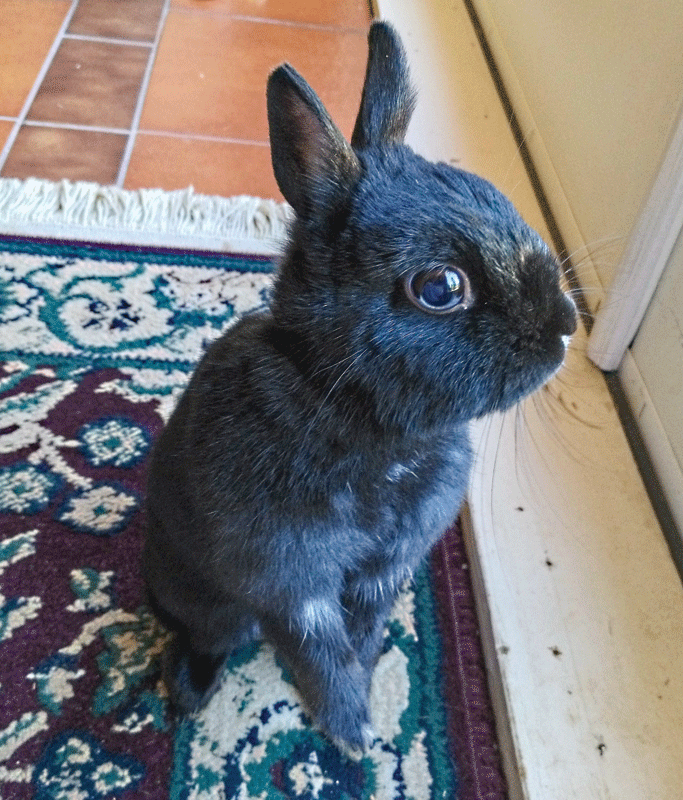
The Year of the Rabbit has seen an abandonment crisis for pets hastily acquired during the COVID lockdowns and are no longer wanted by numerous owners who have returned to work. While this is common for dogs and cats, rabbits do not fall far, being the third most popular pet in North America.1
Rabbits have been vulnerable to abandonment even before the pandemic. Their stereotypical cuteness can be their downfall when it leads to impulse purchases, with Easter being the saddest time of year.
There are no regulations for breeders and private sellers of rabbits, and the animals are not sterilized before going to their new home. When the baby grows from an adorable ball of fur into a hormonal terror, unprepared owners are overwhelmed and may surrender the animal rather than provide for its surprisingly complex needs. Then comes the next unpleasant surprise: shelters and rescues are not anxiously waiting to welcome another rabbit because they are already full to the brim.
So, what to do? Set the rabbit free, of course. Let it be happy out there in nature, with others of its kind. For the majority of these abandoned rabbits, such “freedom” means quick death. Those that survive go on to live a feral existence that is usually short and filled with hardships, including competition from other rabbits, and resulting violent fights.
Domestic vs ‘wild’
In discussions about feral domestic rabbits, one word keeps coming up: “wild.” There are countless instances of people referring to rabbits as “wild” even when it is obvious from the animal’s color alone that they are feral domestics. The term is casually used by the media and even by authorities responsible for managing abandoned domestic animals.
For instance, in British Columbia, Canada, feral domestic rabbits are classified as wildlife in Schedule C of the Wildlife Act.2 We would not think to use the term to refer to a feral cat or a roaming dog, yet domestic rabbits are viewed in a different light. Perhaps their status as a prey species renders them somehow expendable, not to be troubled with since they are meant as a food source for animals we traditionally view as higher-ranking in the food chain, and in our lives in general.
Be that as it may, the misnomer “wild” is both an obstacle to effective management of abandoned domestic rabbits,3 and an indirect threat to truly wild native species.

Understanding the species
North America is home to 15 species of rabbits and hares. The North American rabbits are represented by various species of cottontails, the most common being the Eastern cottontail Silvilagus floridanus and the mountain cottontail Silvilagus nuttalli. The European rabbit, Oryctolagus cuniculus, is an introduced species and considered invasive anywhere outside its home range in Europe. Fortunately, colonies of feral domestic European rabbits have not proliferated in North America the way they have in Australia, where the animals have no natural predators.
The domestic European rabbit was selectively bred from the wild phenotype of the species, the latter found only in Europe. It is this wild phenotype of the European rabbit that is the protagonist of “Watership Down” and other English lore, and the features of this animal have crossed the ocean and found themselves attributed to endemic North American rabbits.
As a case in point, PETA writes that rabbits can build “extensive, complex, engineered burrows” in an article titled “Living in Harmony with Wild Rabbits” that is clearly meant for a North American audience and features photos of cottontails.4 In reality, most species of North American lagomorphs do not dig burrows. Notably, one endemic North American rabbit that does dig extensive burrows is the Mexican cottontail, Silvilagus cunicularis.5
With other species of cottontail, the females dig out forms just deep enough to hide their kits in between feedings, while jackrabbits (hares) make even less of an effort since their kits are born precocious and require no nest as such. Yet, the confusion over burrowing often results in native cottontails receiving unjust blame for undermining lawns, soccer fields, pastures, and even foundations of buildings.6
Effects of domestication
Does it really matter if we refer to feral European rabbits as wild? I believe the implications are important enough to stick to the correct terms. The reason is that in domesticating the European rabbit, we have weakened its defenses and effectively dismantled its wildness. A study comparing the brains of the wild and domestic phenotypes of the European rabbit showed “compared with their wild ancestors, domestic rabbits are less fearful and have an attenuated flight response because of these changes in
brain architecture.”7
Besides changes in the brain that have made domestic rabbits more trusting and, simply put, slower than their wild ancestors, there is external appearance for which the animals were purposefully bred. Even if a given rabbit’s primal instincts are strong, a conspicuous coat color will make it an easy target for predators. Many rabbits do survive in the feral state and appear to enjoy their freedom as long as they are also free of illness and pain.
However, the means by which abandoned domestic rabbits are selected for survival, and by which the unfortunate ones meet their death, are cruel and unfair. These rabbits no longer possess their wild ancestors’ defense mechanisms. Domestic rabbits were not bred under the selective pressures of running away from predators, dodging cars, or finding shelter and sustenance in conditions of extreme heat or extreme cold. In the words of Antoine de Saint Exupery, “We are forever responsible for those we have tamed.”
As the domestic subspecies of the European rabbit, these animals are not meant to live a feral life any more than homeless people are meant to live on the streets.
What about helping out these abandoned rabbits by feeding them the way feral cat colonies are fed by kindhearted individuals? While this might seem like a nice thing to do, and certainly appeals to our sentimentality, it is ultimately harmful to the rabbits.
When the animals receive food from outside their environment, this is a cue for females to produce more young than can survive in that environment, and the cycle of overpopulation and resulting suffering is repeated. Thus, no matter how much some people might enjoy seeing rabbits grazing on a green lawn, the perils of the animals’ feral existence, and their possible role in the spread of the RHD virus, dictates domestic rabbits simply do not belong out there.
The solution to this crisis is outside the scope of this article, but relies on education of the public, regulation of breeding and sales of animals, sterilization of pet rabbits, and sanctuaries where sterilized and vaccinated rabbits live out their lives in colony settings such as those established by the Rabbitats Rescue Society.8

Veronica Gventsadze M.A., PhD, DVM, worked as a conference interpreter and a university professor of philosophy before turning her love of animals and biology into the profession of a veterinarian. Upon graduating from Ontario Veterinary College in 2008, Dr. Gventsadze moved to British Columbia, where she practices as a small animal veterinarian, with a particular fondness of rabbits. She can be reached through her website https://veronica-gventsadze.com/contact.
References
- https://www.morrisanimalfoundation.org/article/rabbits-bunnies-pet-health-adoption#
- https://www.bclaws.gov.bc.ca/civix/document/id/complete/statreg/13_168_90#ScheduleC
- https://abandonedrabbits.com/about/
- https://www.peta.org/issues/wildlife/rabbits/
- The pattern of maternal behaviour in the New World Mexican cottontail Silvilagus cunicularis in comparison with the Old World European rabbit Oryctolagus cuniculus. Luisa Rodriguez-Martinez, Margarita Martinez-Gomez, Amando Bautista, Robyn Hudson. Published in the conference proceedings of the 6th World Lagomorph Conference. Montpellier, France July 4-8, 2022.
- https://forfoxsakewildlife.com/2019/10/30/u-s-rabbits-dont-burrow/
- Changes in brain architecture are consistent with altered fear processing in domestic rabbits. Irene Brusini, Miguel Carneiro, Chunliang Wang, +11, and Leif Andersson. Proceedings of the National Academy of Sciences. June 25, 2018 115 (28) 7380-7385
- https://rabbitats.org/about/
